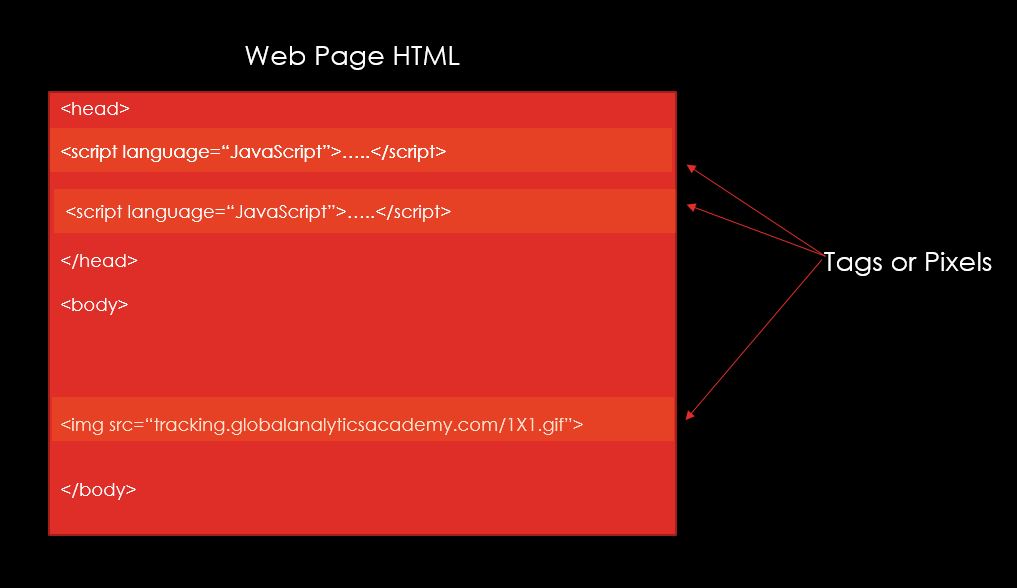Tag is a snippet of code, generally a JavaScript code, that goes on your web pages or apps. This tag collects the information about users and users’ behavior and then send that information to the tool/tag provider.
These tool providers then use the data collected to provide their service such as analytics, targeting, reporting etc.
Some examples of tags are, Google Analytics Tracking tag, Google AdWords tag, Facebook tracking pixel etc.

Example: Google Analytics Tag
These tags can also be written in HTML (Hyper Text Markup Language) or a clear image file that is invisible to users but can send information to the server.
A website generally has several tags from various tool providers. These tags go directly on the web pages and require implemented by the website developers.

This is where the problem happens. Anytime you need to change something, you are dependent on the developers to make those changes. You must work with their schedule and wait for them to implement the code that you want. A lot of times that's too late because they have their own priority list and your needs are generally the last on their priority list.
Changing the tags is also very expensive and time consuming because when developers make a change to a page, it requires quite a few people in the process to make sure that everything is working fine before the code can be made live.
Net result is that making any changes to tags is not an easy process. This is where a Tag Manager helps a marketer. Tag Manager removes the need to put individual tags on the pages and makes it fast and easy to make any changes without any help from a developer.
Tag Manager provides you a single JavaScript code that needs to be placed on your pages. This code needs to be placed on your site only once by your developers on all the pages on your website or app. Once the code is implemented, the job of a developer is done. Developers won’t need to be involved in anything going forward.
This Tag Manager code acts like a container which then triggers various tags that you define in a separate interface.

Any addition and changes to the various tags are done via Tag Manager interface and do not require a developer. Someone in marketing team can easily manage all these tags without touching the code on the page.
Any time you need to make a change to any of the tags, instead of making a change in your page you go to the tag manager interface and make changes in that interface. Next time your web page needs a tag it gets new tag from the tag manager. This helps eliminate your need to be dependent on IT or a developer and you can make all your tag changes in a matter of hours or even minutes.
Want to learn Google Tag Manager? Enroll in our course
- Google Tag Manager (GTM) Online Training Course - From Zero to Hero
- Google Tag Manager Advanced Applications
Related Services
